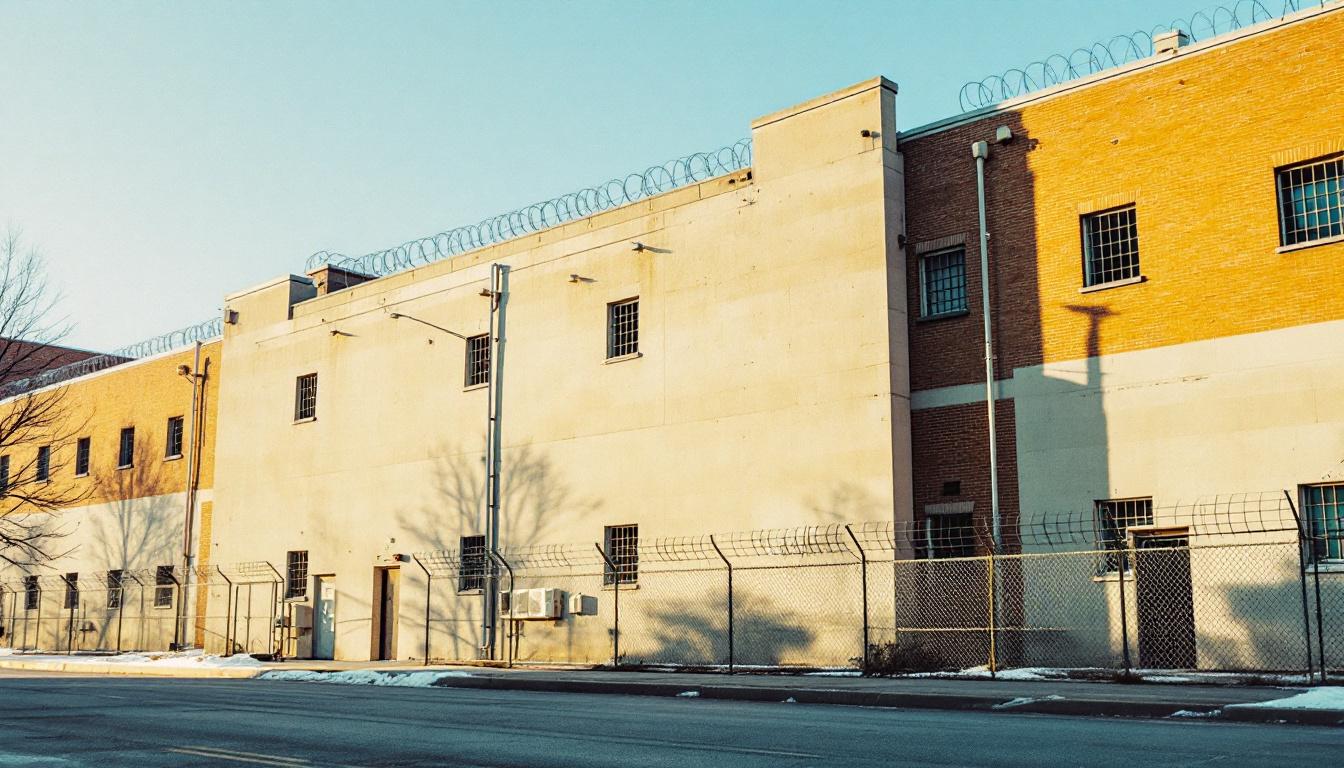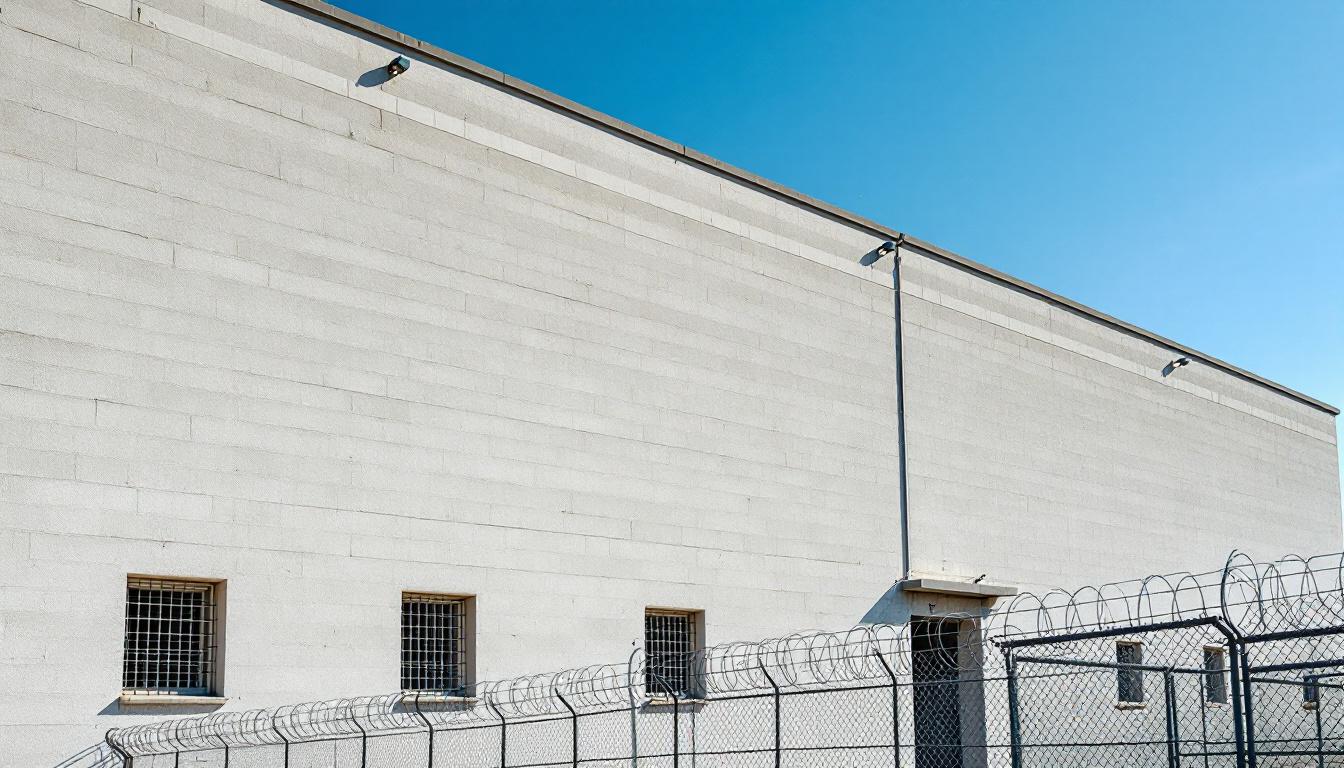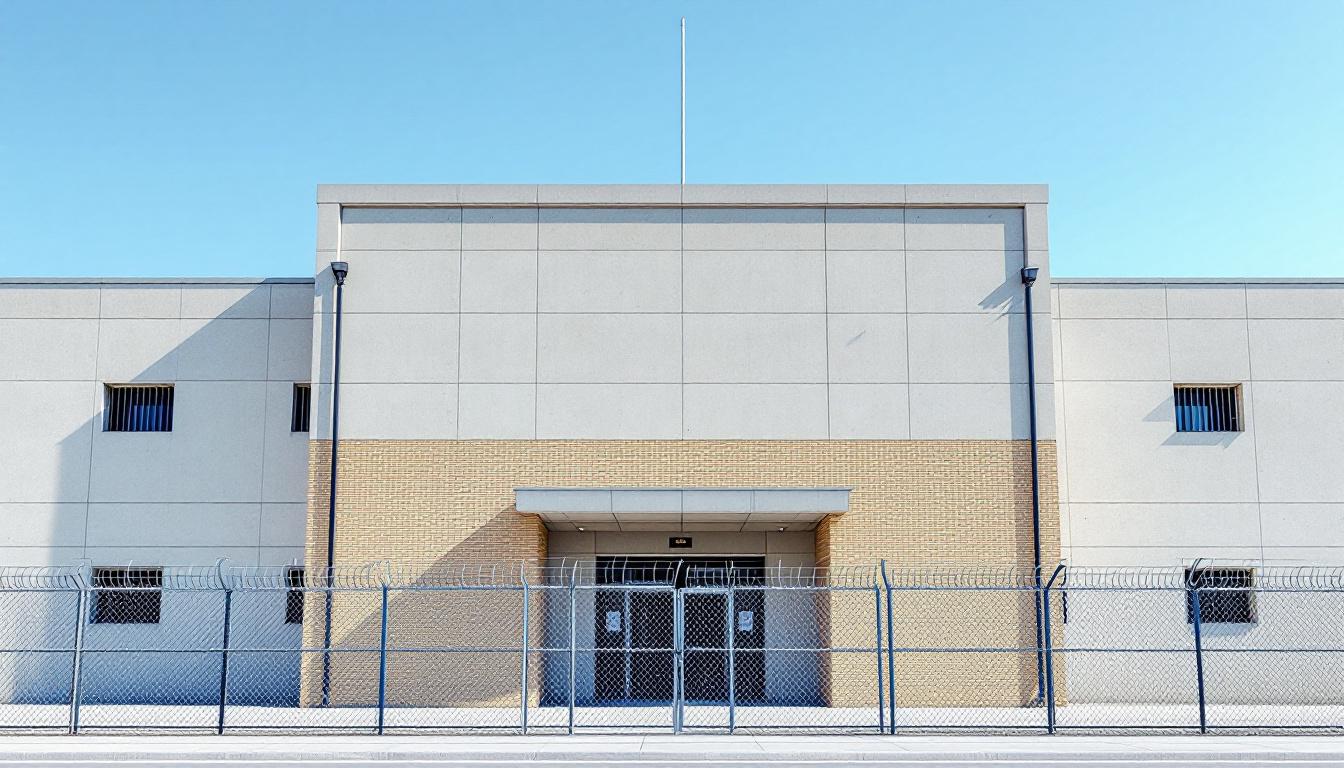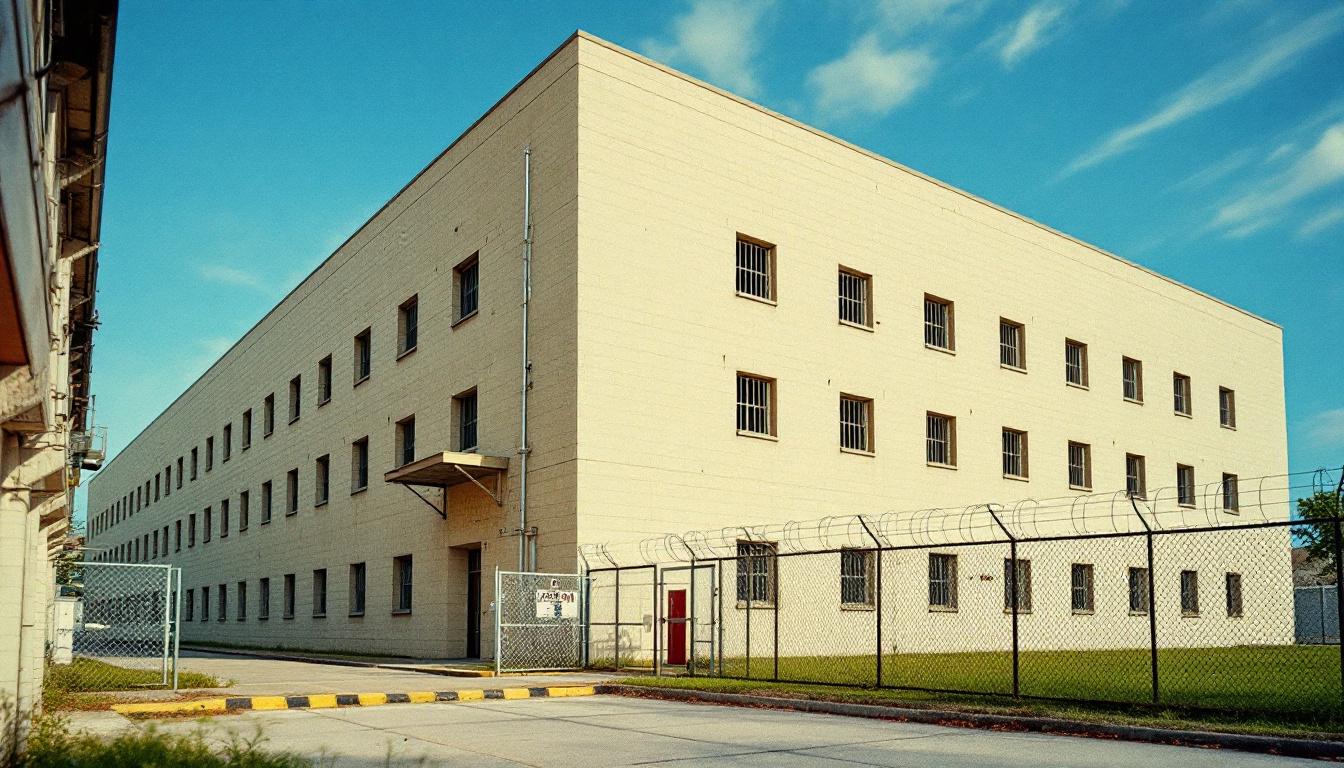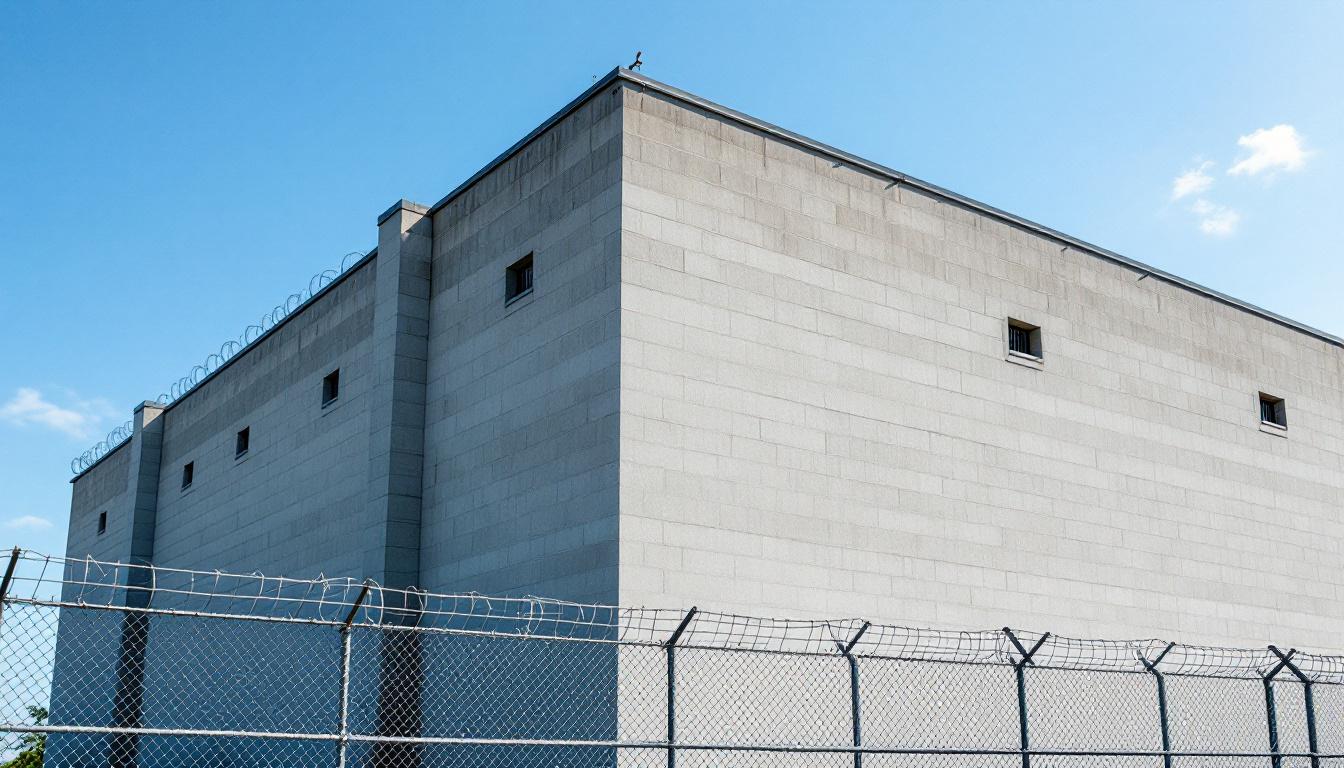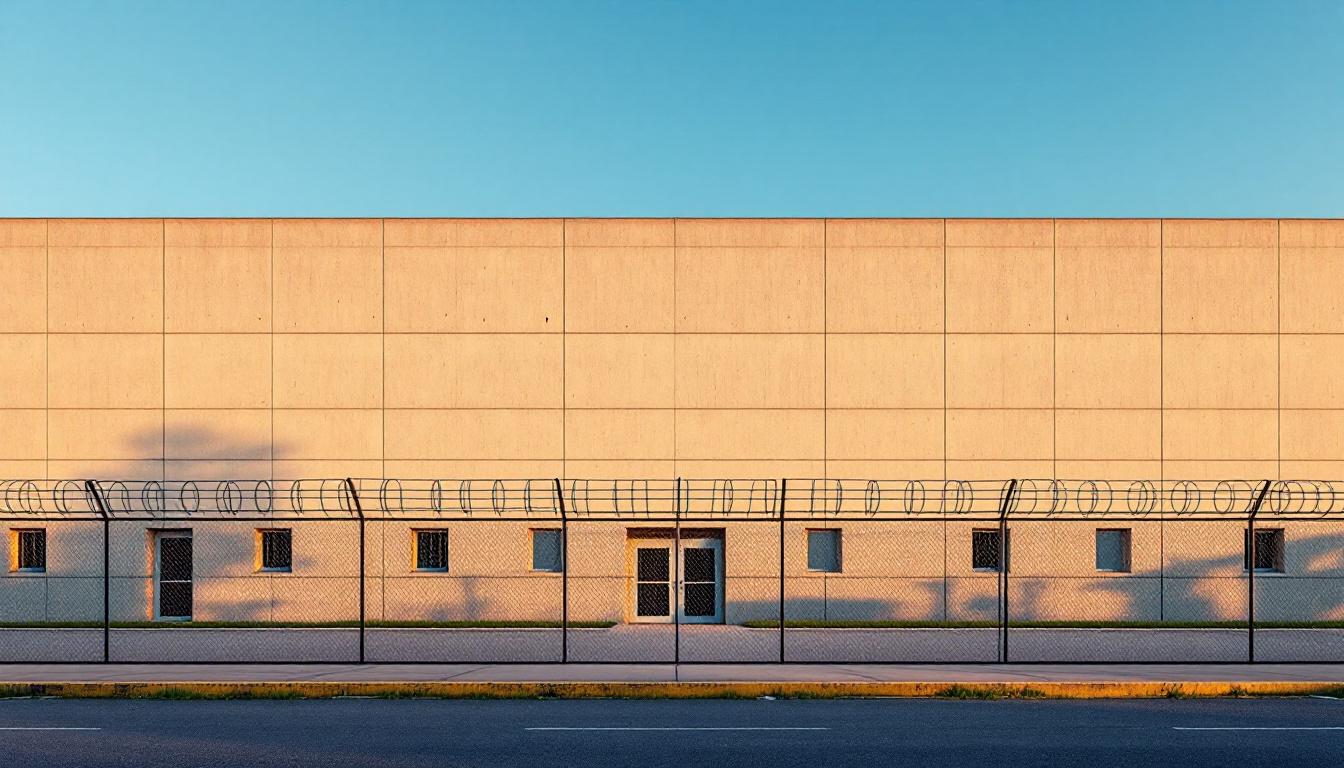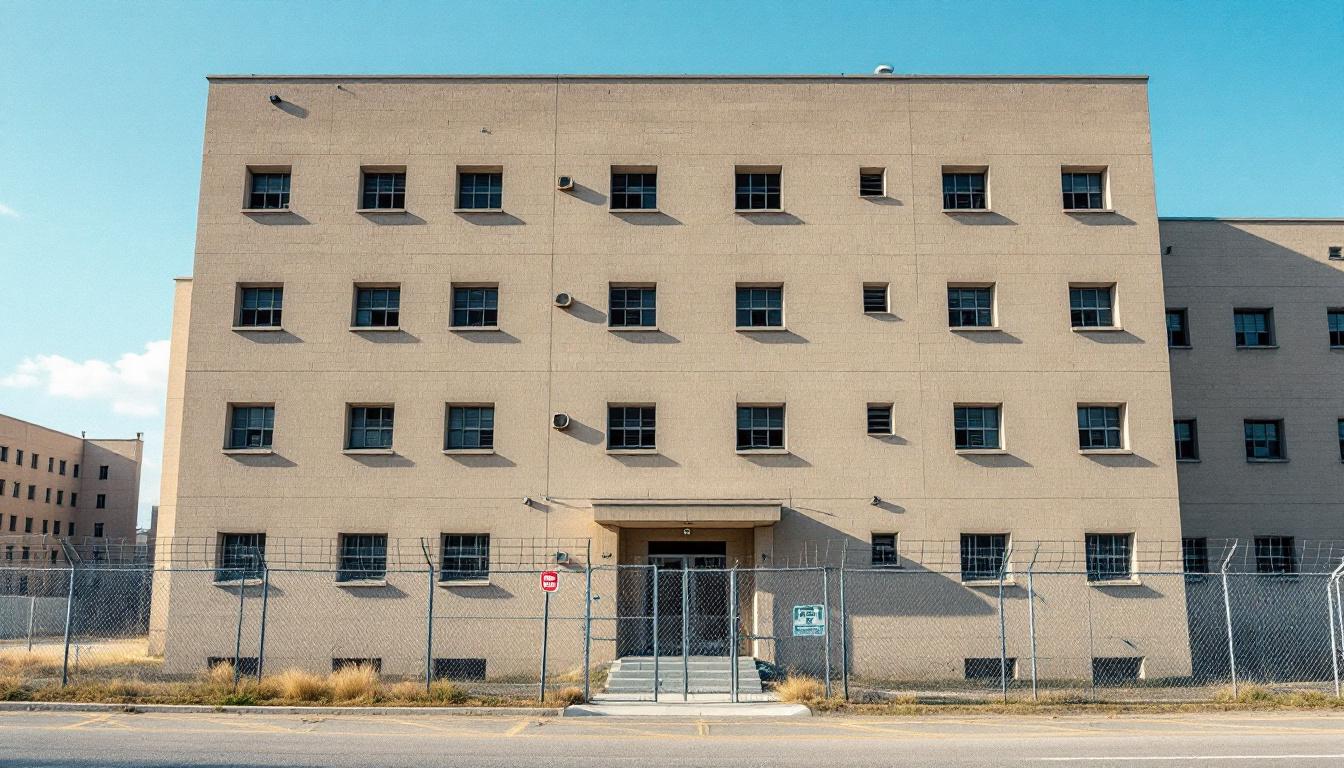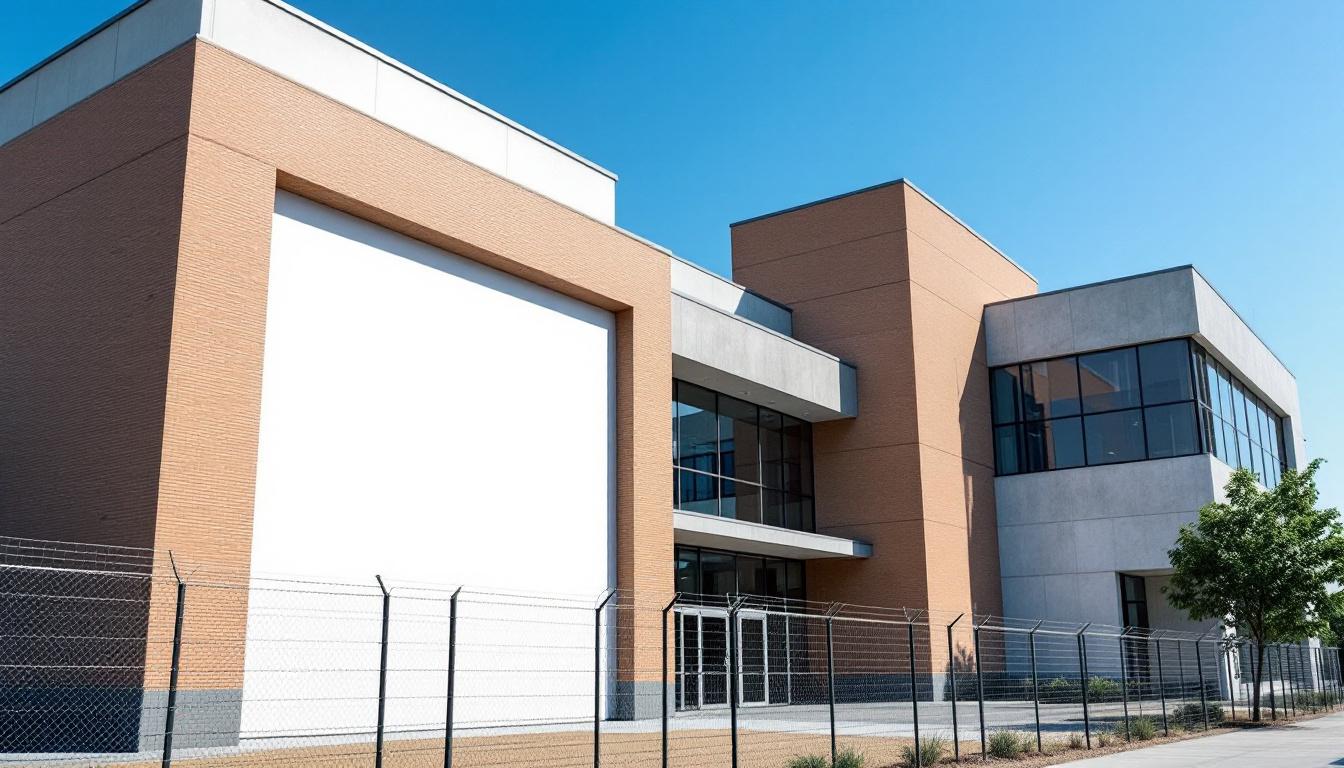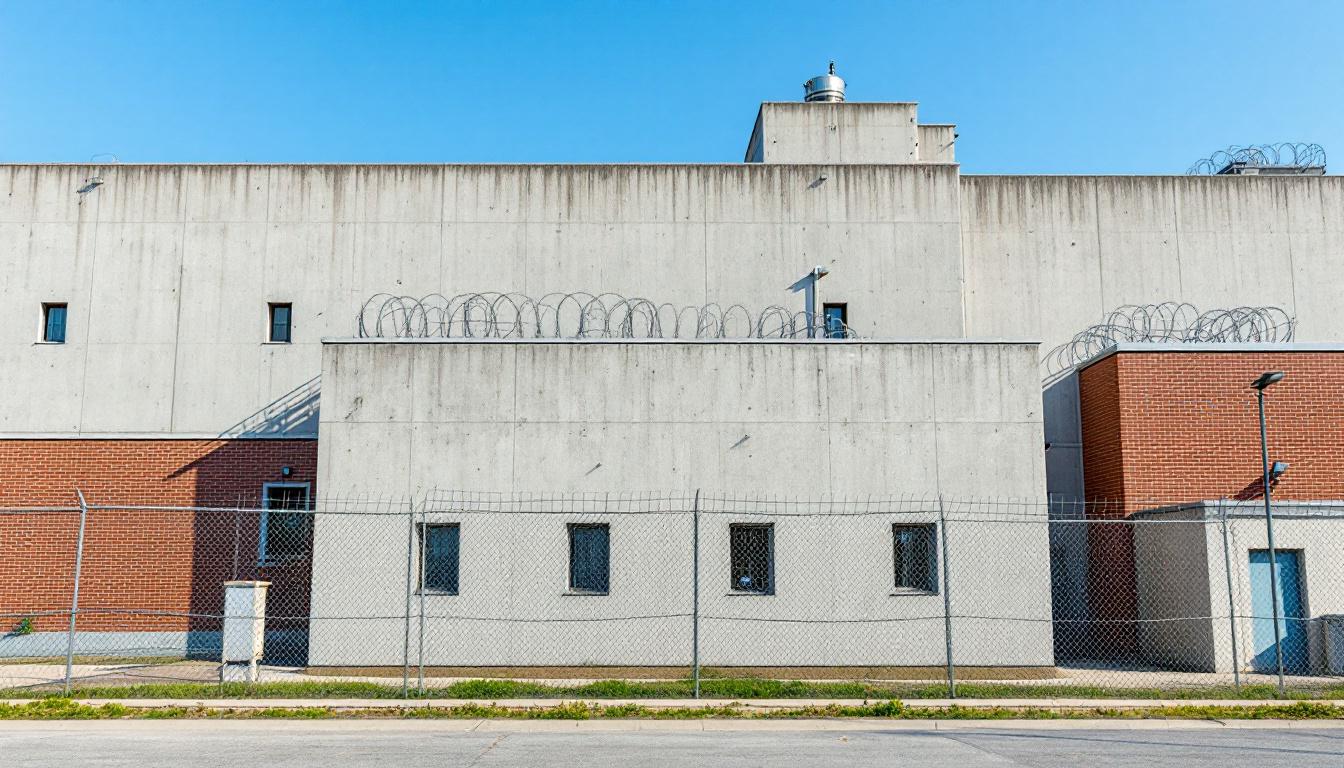
Quick Navigation
How to contact an inmate at Bullock Correctional Facility
This comprehensive guide will walk you through how to connect with an inmate at Bullock Correctional Facility. Follow the steps below to find an inmate and send letters and photos:
- Search for the inmate using our search tool below
- Create your account or log in to Penmate
- Write your message (up to 6,000 characters)
- Send instantly - inmates receive printed copies daily
Find an Inmate
Search for an inmate to start communicating today
Tip: You can search by first name, last name, or inmate ID number
To contact a person at Bullock Correctional Facility start by searching for the person on the official facility website. Perform a search by following these steps:
- Step 1: Enter their first name and last name into the search form and click "Search"
- Step 2: Locate their inmate record
- Step 3: Write down their Inmate ID and any housing information provided
Important! Be sure to enter the person's full name. Nicknames should not be used.
How to Send Messages to Inmates

You can use your phone or computer to send emails, letters, and photos to an inmate. Messages are sent electronically to inmate tablets or kiosks at the facility. If you would like to send a message, start by searching for an inmate at Bullock Correctional Facility.
Sending Photos and Postcards

A great way to send love and support to a loved one at Bullock Correctional Facility is to send photos and postcards. It only takes a few minutes to send photos from your phone and it makes a huge difference. You can also mail postcards with words of support and inspiration, or design your own postcard for special moments like birthdays and holidays.
Important! Be sure not to send any explicit photos or they may not be approved by the facility. You can also use a photo printing app like Penmate to make sure your photos are printed at the correct size (4x6 or 3x5) and are mailed according to the rules and regulations of Bullock Correctional Facility.
Frequently asked questions about Bullock Correctional Facility
-
How long does it take to deliver a message?
If you're sending an email message your letter is usually delivered within 24-48 hours. For messages sent via mail you should expect delivery within 3-7 days. All messages will need be approved by Bullock Correctional Facility.
-
How much does it cost to send a message to Bullock Correctional Facility?
You can send a message free using your phone or mail a message via USPS for the price of a $0.60 stamp and envelope. You can also purchase credits or e-stamps from services starting at $1.99.
-
What services can I use to contact an inmate at Bullock Correctional Facility?
Penmate
You can use Penmate to send letters and photos to an inmate from your phone. It's an easy way to stay in touch during your loved one's incarceration. Use the inmate locator to find an inmate's location and contact information, then you can send messages within a few minutes.
Securus messaging
Securus may be another option for communicating with an inmate at Bullock Correctional Facility. You can create a friends and family account and purchase credits to send messages. All messages will be reviewed and must be approved by the facility.
JPay
Some county jails and state prisons may support sending messages with JPay. You must register an account with the system, find your loved one, and purchase stamps to send messages. For some locations you can also attach photos.
Smart Jail Mail
You may also check if Smart Jail Mail is available at Bullock Correctional Facility. Smart Jail Mail is operated by Smart Communications and has contracted with some state and county jails. After purchasing credits, your messages and photos are sent to the facility, printed out, and then handed out to your loved one.
-
What is the mailing address of Bullock Correctional Facility?
Mailing address:
Bullock Correctional Facility
104 Bullock Dr
Union Springs, AL 36089
Phone: (334) 738-5625 -
What are the visiting hours at Bullock Correctional Facility?
Visiting hours at Bullock Correctional Facility vary by housing unit and security level. Generally, visits are scheduled on weekends and holidays, with some facilities offering weekday visits. Contact the facility directly at (334) 738-5625 or check their website for the current visiting schedule. Visits typically last 30-60 minutes and must be scheduled in advance.
-
What items are prohibited when sending mail to Bullock Correctional Facility?
Prohibited items typically include: cash, personal checks, stamps, stickers, glitter, glue, tape, staples, paperclips, polaroid photos, musical or blank greeting cards, hardcover books, magazines with staples, and any items containing metal or electronics. Only send letters on plain white paper with blue or black ink. Photos must be printed on regular photo paper (no Polaroids). Always check with Bullock Correctional Facility for their specific mail policies.
-
How do I send money to an inmate at Bullock Correctional Facility?
You can send money to an inmate at Bullock Correctional Facility through several methods: 1) Online using JPay, Access Corrections, or the facility's approved vendor, 2) Money orders mailed directly to the facility with the inmate's name and ID number, 3) Kiosks located in the facility lobby, or 4) Over the phone using a credit or debit card. Fees vary by method, typically ranging from $2.95 to $11.95 per transaction.
-
Can I schedule a video visit with an inmate at Bullock Correctional Facility?
Many facilities now offer video visitation as an alternative to in-person visits. At Bullock Correctional Facility, video visits may be available through services like Penmate, Securus Video Connect, GTL, or ICSolutions. Video visits typically cost $10-20 for 20-30 minutes and must be scheduled in advance. You'll need a computer or smartphone with a camera and reliable internet connection. Contact the facility for their specific video visitation policies and approved vendors.
-
What identification do I need to visit an inmate at Bullock Correctional Facility?
All visitors must present valid government-issued photo identification such as a driver's license, state ID, passport, or military ID. Minors must be accompanied by a parent or legal guardian who can provide the minor's birth certificate. Some facilities require visitors to be on the inmate's approved visitation list, which may require a background check. Contact Bullock Correctional Facility for specific ID requirements and visitor approval procedures.
-
How can I find out an inmate's release date?
To find an inmate's release date at Bullock Correctional Facility, you can: 1) Use the online inmate search tool if available, 2) Call the facility's records department, 3) Contact the inmate's case manager or counselor, or 4) Have the inmate provide this information during a call or visit. For privacy reasons, some facilities only release this information to immediate family members.
Facility Overview
Contact Information
Bullock Correctional Facility104 Bullock Dr
Union Springs, AL 36089
Phone: (334) 738-5625
Official Website
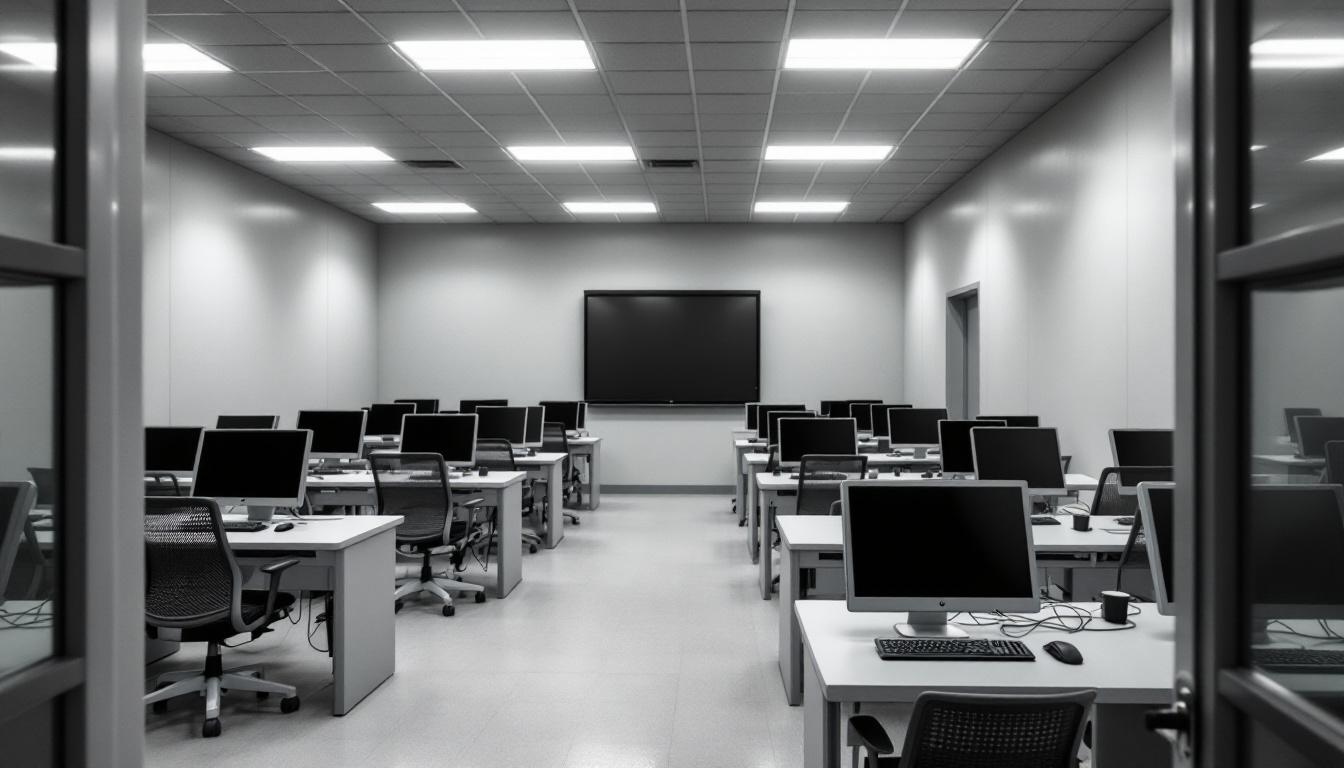
About Bullock Correctional Facility
Nestled within the rural landscape of Union Springs, Alabama, this state correctional facility operates as a significant component in Alabama's comprehensive correctional network. Through systematic processing of rehabilitation programs and structured daily operations, Bullock Correctional Facility typically maintains its role as an AL correctional facility designed to house adult male offenders while emphasizing gradual reintegration preparation.
The facility generally implements various residents services that may include educational programming, vocational skill development, and structured counseling opportunities. These rehabilitation-focused initiatives often work in coordination with Alabama's broader correctional objectives, creating pathways for personal development during incarceration periods. Mental health support services and substance abuse programming typically complement the educational components, forming a comprehensive approach to addressing underlying factors that may contribute to criminal behavior.
Within Union Springs' community context, this correctional facility generally operates with attention to both security protocols and progressive programming elements. The facility's systematic approach to daily operations often includes work assignments, educational scheduling, and structured recreational activities that support long-term rehabilitation goals. Through these coordinated efforts, the institution typically contributes to Alabama's statewide mission of balancing public safety requirements with meaningful preparation for eventual community reentry.
Programs & Services
Educational initiatives form the cornerstone of rehabilitative efforts, encompassing comprehensive literacy programs that address fundamental learning gaps while advancing residents toward meaningful academic credentials. These structured learning environments typically provide adult basic education coursework, high school equivalency preparation, and specialized literacy support designed to enhance critical thinking skills and practical knowledge application. The educational framework often includes computer literacy components and life skills instruction that prepare residents for successful community integration upon release.
In addition to this academic foundation, vocational training initiatives may deliver hands-on instruction in various trade disciplines, enabling residents to develop marketable skills that align with regional employment opportunities. Food service operations training typically provides comprehensive instruction in commercial kitchen management, food safety protocols, and culinary techniques, offering residents practical experience in a high-demand industry sector. These skill-building programs often incorporate both theoretical knowledge and practical application, allowing participants to gain confidence while mastering essential workplace competencies that enhance their employment prospects.
Support services encompass a multifaceted approach to addressing the complex needs that residents face during incarceration and preparation for reentry. Work release initiatives may provide structured opportunities for qualified residents to maintain employment in the community while serving their sentences, facilitating the preservation of family connections and financial stability. Faith-based programs typically offer spiritual guidance and community support networks that address personal growth and moral development. Identification document assistance services often help residents obtain essential documentation such as birth certificates, social security cards, and state identification, removing critical barriers that frequently impede successful reintegration into society.
Daily Life & Visitation
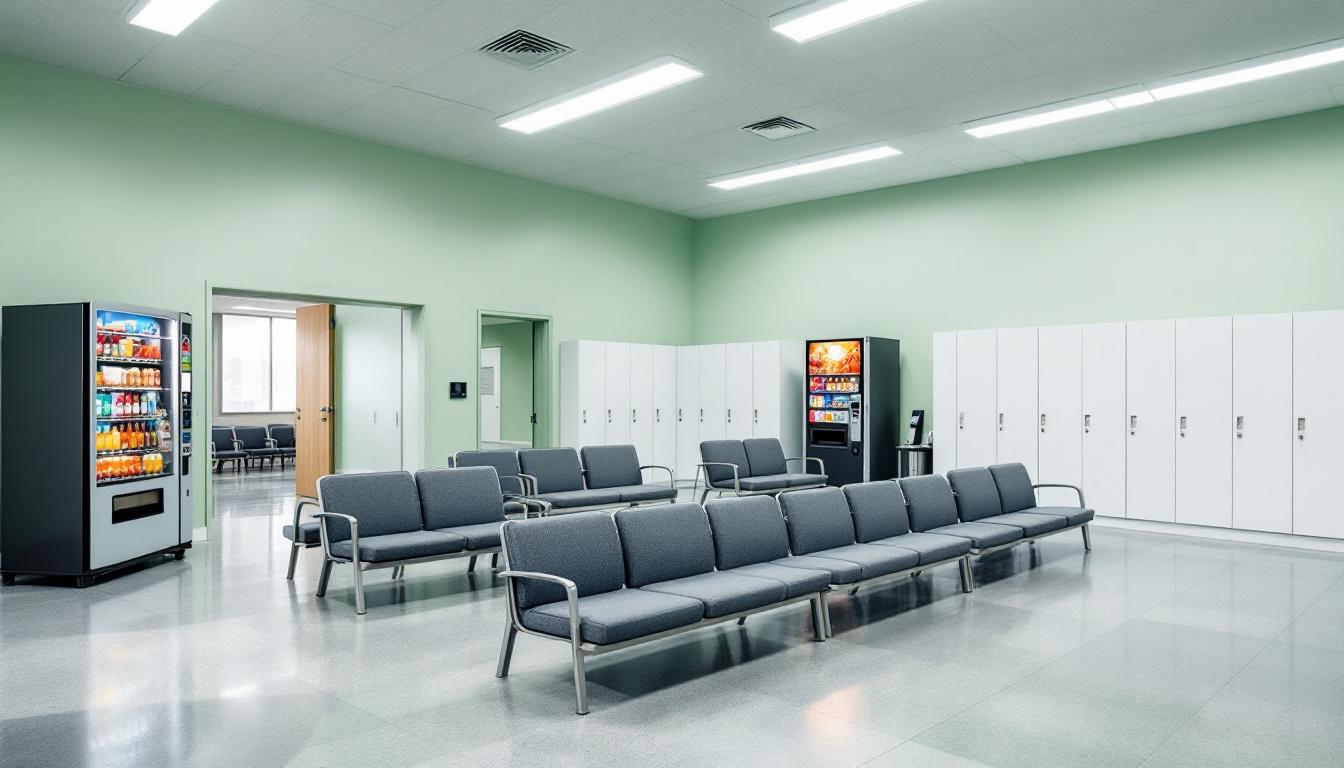
The rhythmic sound of morning announcements typically signals the beginning of another carefully orchestrated day, where residents at present find themselves moving through a sequence of activities that actively shapes their daily experience. Generally beginning before dawn, the structured routine delivers a predictable framework that many residents come to rely upon, with designated times for meals, work assignments, educational programming, and personal activities. This consistent schedule typically includes count times throughout the day, ensuring accountability while providing residents with clear expectations about when and where they need to be at any given moment.
In addition to this regimented schedule, living accommodations usually consist of shared housing units where residents maintain their personal spaces within the facility's guidelines. Dormitory-style or cell-based housing arrangements typically allow for some personal belongings, though items are generally subject to facility regulations and periodic inspections. Meals are usually served in common dining areas at designated times, with residents often assigned to specific seating arrangements or shifts to accommodate the facility's population. The commissary system generally provides residents with opportunities to purchase approved personal items, snacks, and hygiene products, offering some degree of personal choice within the structured environment.
Despite this highly regulated atmosphere, recreational opportunities and family connections actively contribute to residents' overall well-being during their time at the facility. Physical exercise periods typically include access to outdoor recreation areas or gymnasium facilities, while educational and vocational programming may deliver valuable skills training and personal development opportunities. Visitation policies generally allow for regular contact with approved family members and friends, though these interactions usually occur within designated areas and time frames. Phone privileges and correspondence typically provide additional means for residents to maintain important relationships, helping to preserve family bonds that often prove essential for successful reintegration into the community.
Ready to Connect?
Start communicating with your loved one today
Search for an Inmate
